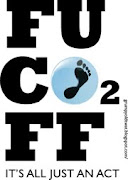Maybe.
DNA evidence has certainly caught and convicted criminals, though much of the time it's part of a variety of evidence and fairly few cases rest solely on DNA. But does that mean 100% reliability? It'd be convenient to think so but unfortunately DNA evidence is far from perfect. 22 year old Farah Jama can tell you that.
"Nobody will understand the pain I went through … or the stress," Mr Jama said. "You kind of lose hope."What he refers to is spending fifteen months in jail for a rape which he did not commit. A rape that he was found guilty of because DNA evidence, despite a "mountain of improbabilities", is considered nigh on infallible. And it might be close to infallible when done right, but human beings are not infallible and the gathering of DNA evidence is carried out by human beings. Now and again they will stuff things up.
Mr Jama was found guilty of raping a 40-year-old woman at a nightclub in Melbourne's outer-eastern suburbs after the victim was found unconscious.It turned out that that medical officer did not follow protocols designed to prevent contamination of samples, and this hugely important point was not considered.
She had no memory of the crime but Mr Jama's DNA was later found on the victim.
The then 20-year-old denied ever being near the nightclub on that night, saying he was reading the Koran to his critically ill father at his bedside in their home in the northern suburbs.
The only evidence police had was the DNA sample of Mr Jama, which was coincidently taken 24 hours before the alleged crime after he was investigated over another unrelated matter but not charged.
Prosecutors told the court this morning that it had since been discovered that the same forensic medical officer who took the first DNA sample of Mr Jama had coincidently taken the DNA sample from the 40-year-old rape complainant 24 hours later.
The report by former Supreme Court judge Frank Vincent - tabled in Parliament yesterday - slammed Victoria Police, the Office of Public Prosecutions, and forensic medical officers over the case and the authorities' failure to consider any other evidence connecting Mr Jama to a crime that never occurred.Consider the possibilities if the same thing happened in a murder case somewhere that still uses capital punishment. Except for the most obvious way of leaving getting off Death Row is probably tricky once you're on it. But even in non-death penalty convictions placing such faith in DNA that innocents are sent to jail is both costly, unjust and, given that the police stop looking for an offender, inefficient - a true lose-lose situation.
...
Last December, Chief Commissioner Simon Overland banned police scientists from giving evidence in court until further notice after it was discovered that statistical analysis used to interpret DNA tests had not kept pace with new-generation DNA equipment.
The ban came days after Mr Jama's rape conviction was overturned because of contaminated DNA evidence, and lasted until January 12.
In his report on Farah Jama, Mr Vincent said: "The DNA evidence appears to have been viewed as possessing an almost mystical infallibility. The outcome was, in the circumstances, patently absurd," he reported.
"There were ample warning signs … but they were simply not read."
Nor is cross contamination the only potential pitfall, as pointed out here. You shed your DNA when you walk across the room so any DNA found at a crime scene is often circumstantial, it degrades meaning potentially coincidental partial matches may result, and despite the overwhelming odds quoted it's impossible to rule out a coincidence - a million to one means 20 other matches to my DNA just here in Australia alone, and even a billion to one would mean five or six other people worldwide.
So is it unreliable? No, quite the reverse. But mistakes are made and they're not being caught in time to prevent miscarriages of justice. This almost unshakeable faith in the reliability of DNA matches badly needs to be shaken.


















